The questionable origin of the majority of martial arts clothing
Moral arrangements we all make when facing this sad truth
As Budoka, most of us feel having moral values superior to those only practicing “sports”, we like to believe that we are better. Are you—as Budoka—more concerned by human conditions and human rights? Are you concerned with the origin of the products you buy and wear? Take your Dogi, your belt and have a look at the label. Pakistan? Bangladesh? China? Japan? Let us examine under what conditions your equipment is manufactured.
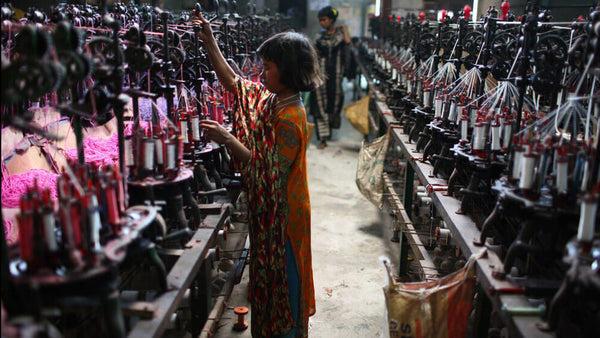
Child labor in a textile factory in Dhaka, Bangladesh. Source : Zoriah.net
I had the idea of writing this article after watching the video below. I am concerned with this issue since I created BudoExport and Seido. Seido, our brand, offers ONLY 100% made in Japan products. As for BudoExport, this company offers products of various brands, including some products made in China, BUT absolutely NO product made in Pakistan, Bangladesh, etc.
Usually we only publish pictures and videos we produce ourselves, but in this article, we exceptionally will take a number of external elements. Of course we indicate the sources, so you can go further on the subject if you choose to do so.
Japan, Europe, USA : Laws to Protect Workers
As westerners, you know that you, your family and your children are protected by laws. The working time is controlled, child labor is prohibited, and the working conditions are standardized. I am not saying that these working conditions are easy for everyone, but they are much more human than in other countries.
Prices are high, too high.
Unfortunately yes, the prices are high, too high for many of us. But there is a reason for it. And this reason is very directly related to the amount of your salary and your lifestyle. Everything is connected, and if you buy a product made in another country, you only partially participate in the economy of your own country, and only in the service sector. If you buy something “made in your country”, you participate in the economy in its entirety, including the industrial sector.
“Entirely made in your country” is, of course, not possible for many countries and products, but to some extent, especially when prices are significantly higher, buying “made in your country”, means to support the economy, support the whole, very complex mechanism, which affects the amount of tax, the amount of your salary, the health institutions, etc. And at the end of this article we will realize that sometimes, the prices are actually not that high after all!
The lack of martial arts equipment
Here is the problem, even if you want to equip yourself with products made in your country,for martial arts products it is impossible in most cases. Maybe there is a confidential manufacturing of wooden weapons, and some tailors who produce Hakama or lightweight Dogi, but the production is very limited. Should we start producing those products in our countries? I do not know, maybe that would be a solution, but buying “made in Japan” products is another one.

Everything Is About Balance
Buying a product made in Japan remains very viable for the economy as long as the balance between the importing (your) country and Japan is remaining. Unlike China, Pakistan or Bangladesh, countries that export far more than they import, Japan imports many products. If Japan imports about as much from your country as your country imports from Japan, it leads to reciprocal balance.
The special case of China
10 or 20 years ago, we could have put China in the same category as Pakistan or Bangladesh, but we have to recognize that things have changed. Of course, the situation is far from perfect, but working conditions as well as the quality of the manufactured goods have greatly improved. The majority of the worldwide production of martial arts equipment is now in China, resulting in products that are very bad to quite ok, and prices much more affordable for most people.
When buying “made in China”, a quick product quality control allows to realize the manufacturing conditions. The better the product, the better its manufacturing conditions.
So should we buy “made in China”?
If we go back to the question of balance I mentioned previously, the answer would rather be no. But if one comes back to more pragmatic and realistic considerations, the answer is obviously yes. If you do not have the means to buy “made in Japan” , then “made in China” is a viable solution that will get you a product of “ok” quality at a significantly lower price. (If the seller is honest, of course.)
Pakistan, Bangladesh, Philippines, Sri Lanka : inhuman conditions
This is where the tone of this article changes and darkens considerably. In these countries, working conditions are closer to slavery than work. Scandals occur one after another and the dead bodies of adults and children pile. The collapse of a textile building on April 24 in 2013 in Dakha, capital of Bangladesh, which caused over 1`000 deaths put the topic on the agenda for a while, just once, and way too short.
> See : The Guardian: “Bangladesh garment workers suffer poor conditions two years after reform vows”
You can check out the following documentary about working conditions in Bangladesh : Hidden Face of Globalization, by the Institute for Global Labour and Human Rights.
This survey focuses on several internationally famous brands. However, it is the same for many other, less noted brands, that manufacture martial arts equipment - surely known by our readers.
In Bangladesh, the legal age to work 36 hours per week is 14, or 18 for a week of 60 working hours. But the law is very little respected, and it is normal to see children at the age of 12 or 13 working 70 to 75 hours a week. In Pakistan, it was reported that children of 4 or 5 years were weaving wool and cotton on the floor.
Manual work, combined with insalubrious conditions, and this particularly in the manufacture of martial arts equipment, where the bleaching process of the garment is extremely toxic, are causing malformation, growth problems and inevitably a life expectancy of no more than 35 years in some areas.
International Labour Organization Child Labour ILO
Environmental impact
Less shocking, but also very worrying for the future of our planet, is the environmental impact of the textile production especially due to dyes and bleaching cotton, particularly regarding the fabrics of Martial Arts. There are many whitening techniques, more or less damaging to the environment, but the most common is as simple as to pass the cotton in baths of chlorinated derivatives (bleach). These products are extremely dangerous and toxic, particularly because of the acid vapors that are produced.

This is what the product used for the bleaching can do to a Dogi if undiluted.
While many countries, including Japan, have relatively strict standards concerning the working conditions of the employees, ensuring the safety of workers and the quality of products, but also the reprocessing conditions of these chemicals, it is not the case in countries like Pakistan or Bangladesh. I have not seen it myself, but a colleague of mine, who works in the same industry sector, told me how children of 14 or 15 years spend their days filling and emptying the chemical baths in dilapidated factories. No protection, not even gloves. (The said colleague then immediately stopped all cooperation with Pakistan and refuses explicitly to import products manufactured in these conditions.)
These chlorinated baths are simply emptied outside, in or beside streams, that further downstream supply slums. The environmental impact of uncontrolled production of this type is probably directly or indirectly responsible for environmental and health disasters.
Brands/companies without ethics.
All of this is well known by the importers of Pakistani products. I cannot mention names, but I will give you some numbers that can help you form an opinion about the products available on the market.
- The average cost of a Judogi made in China (wholesale price) is about $40 net price* (leading to a minimum selling price of roughly USD100 after tax)
- The average cost of a Judogi made in Pakistan (wholesale price) is about $15 net price* (or a minimum selling price of roughly $40 after tax)
- The minimum cost of an entry-range light weight Judogi made in Japan (wholesale price) $70 net price* (leading to a minimum sale price of roughly $140 after tax)
* wholesale prices, excluding import costs
In short, a Judogi sold $40 net price cannot be made in China, but only made in Pakistan or Bangladesh.
- A Judogi made in China costs at least—with a relatively small margin—$80 to 100.
Also note that the shrinkage rate of about 15% is typical for products made in Pakistan. Products made in China are around 10%, and products made in Japan between 1% and 6%.

Aikidogi made in Pakistan. Its list price in Japan is about $70, for a production cost of only $15.
Margins of up to 85%
While the average margins on the “made in Japan” are around 35 to 45% depending on the brand, there are some brands in the west that will make margins of over 80% on products made in China or Pakistan
You think that you are the winner, because the product you buy is cheaper than the product made in Japan, but in reality, you are losing, because you pay 2 times the price you should pay for the quality you buy.
An old brand now extinct sold Aikido Hakama—presented as “high-end” product, but were actually made in China and traded via a Taiwanese exporter—for about $130 in a boutique in Paris. The same Hakama have been proposed to us (of course we refused) by the manufacturer for about $20 at the time. $130 after tax = $105 net price
Import costs of maximally $5 per Hakama (by boat from China) the calculation is as follows :
- Total cost : $25 net price
- Sales price : $105 net price
- Margin $80—so just a bit more than 80%.
So $130 after tax for the made in China product.
Well, I would like to invite you to have a look at the model: Aikido Tetron Hakama on SeidoShop. It costs about $120 excluding taxes, including shipping. Including taxes—depending on the country—you pay around altogether $140 .
Of course, you will probably tell me that you can find an Aikido Hakama for about $50. Undoubtedly a Hakama made in Pakistan. And you are right, we need the Hakama made in Japan to be three times more resistant over time to justify its price, which is perhaps not the case. (I personally believe it is, but I cannot guarantee it 100%, because I have never tested a product made in Pakistan.)
That said, how many hours do you practice each week? 2, 4, 8h?
Let us say 3 hours per week on average. Or more or less 2 movies a week at the theater for $10, $20 .. counting 45 weeks a year? Meaning a budget of about $900 per year for practice, if you consider it to be at least as important than the cinema. Up to you to decide! (There is nothing moralistic concerning what I just said, I would like to put things in perspective, I fully understand the difficulty for some—who by the way do not go to the movies—buying relatively expensive equipment. So is it better to buy made in Pakistan than nothing I honestly do not know.)
Fake labels
This is not the topic of this article, but do not forget that the vast majority of brands do not indicate the origin of their products in their catalog (online or paper), and many publicity ploys are used to suggest to the customer that the product's origin is healthy. This is the case for example of the famous words “Japanese Quality” found everywhere on the products marked as “Import Asia” which can mean “good made in China” but also “bad made in Pakistan”, depending on the honesty of the seller.
Not to mention those who create fake quality labels or change the “made in ...” labels for “Made in Japan”, this has already been seen everywhere!
And no real quality label
Let us be clear. Neither the Aikikai label or the IJF accreditation (for Judo equipment) nor ANY quality label for martial arts equipment guarantees the origin of the products. There are “made in Pakistan” IJF Judogi or Aikikai Aikidogi. These labels only aim to ensure a specific quality standard, a correct cut and acceptable resistance, nothing more, nothing less.
What to do
As a consumer, your only course of action is the boycott of products from these countries.
But it is up to you to make your choice. I have been practicing martial arts for more than 15 years. My practice has guided me throughout my life in different ways, while educating myself to certain values such as human rights and ecology. Without any value judgment, it is possible that your practice does not bring you that.

Shakil Khan (10), in a textile factory in Dhaka, Bangladesh
Source : Thestar.com
But if, as I hear it from a large majority of Budoka, you think that your art draws on moral values, values that you claim, then I can only urge you to act accordingly.
Finally, I want to clarify that this article is not a one-sided criticism of the martial arts equipment industry or the textile industry in general. There are good and bad, honest people and dishonest people in all sectors, and this will never change. I just hope this article will help at least some of you to ask questions and be more careful when you shop. Never forget that it is you with your money who has the leverage over the industry, it is not the other way around.

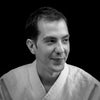
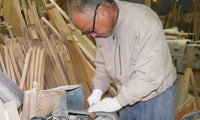
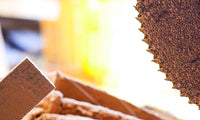
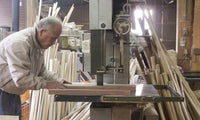
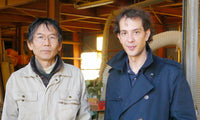
8 comments - The Questionable Origin of Most of the Budo Equipment
This is all very fascinating! I must say I sure as hell wish I had my first bokuto as a child, Chinese souvenir shop quality or no, instead of alas at 33- any bokuto beats the hell out of my old plastic medieval sword and whoosh whoosh green lightsaber, the swords of my early 1980s childhood!
Given what you say, if nearly 100% of wooden weapon production sold in Japan is coming from the four classic Japanese workshops, then “for the Japanese market” must almost certainly be a lie if the item wasn’t made in Japan…?! But then there is this 5-10% made in Japan twist you mention! I’m guessing this means only the finishing touches are done in Japan?
And yes, it was definitely N….. I was thinking of in my previous comments, supplying items made “for the Japanese market”- they are the suppliers for the huge and excellent Copenhagen martial arts store BudoXperten.
I must say that the quality and the variety of the various weapons my wife and I got from N….. at BudoXperten have been excellent.
I would, however, wish and in fact demand that they be as transparent about sourcing and sustainability and fair trade practices etc etc as you are.
Our planet is on fire and contributing to its destruction and to exploitative working practices is surely un-Budo-like and angers the gods and spirits.
I am sure what Seido is doing is the correct approach in this regard for this deadly 21st Century- wherein, as Stephen Hawking emphasized, the beings of Earth will face a multigenerational struggle as we choose our path- toward sustainability, or extinction. This is our world war.
You seem to truly be setting a great example in this and many other ways- and again, you have gone above and beyond- your interviews with the craftsmen have really floored me. You can’t imagine how thrilled I was to hear the origin story in the 1950s of the ubiquitous and charming Kendo/ Iaido bokuto, for example, from a master artisan who was there!
They are very nice people working at B*****, and the Scandinavians as a societal whole tend to be very conscientious in my experience; perhaps if you don’t already supply them you should. After all Copenhagen is at sea level in a very low lying country, so they can relate viscerally to these concerns. Here is their website-
I live in Berlin, however, and as far as I know there is but one small but scrappy martial arts store (well they have two store fronts I just found out) in Berlin called A****. They have a wide variety of wooden weapons, mostly stained, dark red cheap looking stuff, but with a selection of great white oak pieces for the discerning. I train in the Katori Shinto-ryu but I recently picked up very nice Iwama-ryu and Itto-ryu daito there for the sake of the variety.
Perhaps you are the supplier to this store? And if not perhaps you should be, and I hope you will be!
I’m very particular about examining my weapons under strong light before purchase- the gods demand that I take a bokuto with me to train with at nearly all times, and so I am much harder on them than the average practitioner, particularly when I am in a forest with a lot of dead branches about (thankfully the C****** O Bokken can now take off the worst of the pressure in this regard!). And so I haven’t dared to order any wooden weapons online, from anyone. This has served me well and I have a variety of excellent quality weapons, only four of which have broken over the years- three in the Swedish winter so it seems there is a problem of brittleness at low temperatures.
But that said, your work has convinced me, and I really look forward to seeing some of your heavy koryu shoto and daito in person. For example, I sure as hell hope to see some of these babies in A****-
https://www.seidoshop.com/products/jikishinkage-ryu-hojo-bokken-classic-woods
One last question- what is this “very small confidential production” you speak of? Perhaps you mean custom production?
May the blessings of Futsunushi, Odin, Marishi-ten, and Freyja be upon you, your enterprise, and those you are consorting with in your endeavors, Jordy Delage.
Thank you for this interesting information.
I didn’t know that wooden weapons made in China for example were not sent to Japan- I thought this was what… I think it was N…. (at least some years back, I don’t know if they still do) that said their items were “made for the Japanese market”, which made me infer that they were made outside of Japan.
Does this mean nearly every weapon sold all across Japan is made in the four workshops?
Yes I then I can see how it would be hard to compare, when they’re all in the same town etc!
Well you are an ambitious group; I’m flattered to have gotten you gears going on this one.
Thank you for this, and for your related articles and videos on the four remaining workshops in Japan making bokuto and other wooden weapons.
Your conscientiousness is admirable and this information is interesting and valuable to the contemporary practitioner, faced (along with the rest of Terran) life with the current climate change struggle, precipitated by capitalist extremism and fundamentalism.
If I may suggest a follow up article, you might tackle the subject of how to make sure our wooden weapons are made sustainably etcetera.
In reply to The Reverend Kaecyy Tay-McCarthy.
Thank you very much for your kind feedback.
This would be an interesting topic indeed, but since there is almost no wooden weapon importation in Japan, it’s hard to compare from our perspective.
It could be a collaborative job with someone knowledgeable about those practices outside Japan though.
In reply to The Reverend Kaecyy Tay-McCarthy.
This is, indeed, very common practice. “For the Japanese market”, “Japanese quality”, “Shirogashi” (using the Japanese word for wood not coming from Japan), using the Japanese flag or a Japanese name but not mentioning “made in Japan” or even mentioning “made in Japan” while the product itself is only 10 or 5% made in Japan.
And even some very honest retailers get fooled. This is one of the reasons we chose to only offer 100% made in Japan equipment, no discussion, everything’s crystal clear with us.
Regarding the weapons, there are, indeed, some importation of very low Chinese quality weapons, but they are not sold as weapons but as souvenir for kids in souvenir shops. But I would say that most souvenir shop offer the cheapest of the Japanese workshop production instead of made in China items.
It is said that more than 90% of weapons sold in Japan come from one of the four workshop, because in the past, there was some other productions, such as Shureido in Okinawa for Kobudo weapons and artisans making very small confidential production. But I would say that today, it’s nearly 100%.
In reply to The Reverend Kaecyy Tay-McCarthy.
I am sorry, I had to censor your post a little by removing competitor names.
The Budo equipment industry is a tough industry, and some do not hesitate to sue for any kind of funny reasons, so we prefer to avoid mentioning them. (I kept the first name you quoted because discussion the legitimacy of the “Made for the Japanese market” expression is not in question.
Thank you very much for your nice comments.
We are trying, indeed, to do our best to have sustainable practices, and even to help craftsmen settings conditions in which they will be able to carry their work in the future.
But we do nothing exceptional. We just believe that letting craftsmen do their job, as far as it’s small production, without pushing them to produce for a lower cost, is enough.
I don’t know a single craftsman that is not concerned by how the material he uses are produced for example. Or I wouldn’t call him a craftsman in that case.
Human-sized companies, small workshops, dedicated craftsman, if our furniture, clothes and food came from such sources, the world would be in a much better shape.
We seem to be on the same page on this subject !
Regarding your last question, by “very small confidential production”, I was referring to a few one-man workshops that used to exist. I’m not sure there’s still a single one running in Japan, but there was one in Tsukuba in the past. The production was a few dozens of weapons a month at its peak, so very confidential. It’s impossible to say that there’s no other workshop anywhere in Japan if their production is kept under a hundred pieces a month and limited to a specific area (and of course, no website or registration of any kind).
If there are craftsmen like that in the wild, and I hope there are, I wish them the best!
Again, thank you very much for your kind words, and all my best wishes.
Jordy
I’m sorry if I created a problem for you in mentioning some of those companies. In the case of the stores in Copenhagen and Berlin, however, I wasn’t thinking of them as competitors, but rather I was hoping that they can become customers for your products. As I said I have not yet dared to order a wooden weapon rather than examine one in person- but should I ever do so, I think you know you’re at the top of my list.
All very informative and fascinating, once again, Jordy- I shall let you get back to your good work.
In reply to The Reverend Kaecyy Tay-McCarthy.
Absolutely no problem. We’re just being careful.
Thank you very much again for your very nice feedback.
All the best at the dojo !